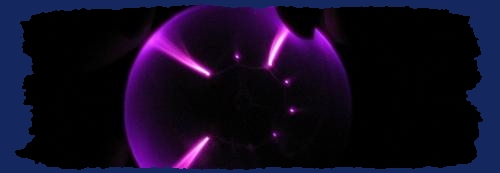
A lot of people have some aquarium at home, and nowadays there is a trend of new technologies and improvements such as LED lighting and automation. I will describe here my version of an automation unit that provides automatic control of LED lights, temperature and air control, programmable via computer...
Some time ago I decided to buy an aquarium, after a long search on the internet I chose Aquatlantis Advance 80. It is the aquarium set, which is also suitable for beginners. It is equipped with LED lighting, a toothed filter and a pump, which should be enough for the start. The aquarium has a volume of 96l and a size of 80x30x40 cm. I can recommend a store that is the official supplier of these Aquatlantis sets and that is www.rataj-spk.cz. For my aquarium I recommended the Profi Soil substrate, which is directly produced by Mr. Rataj, which I can recommend, but be careful that this substrate must be dipped in warm water before using it for 2 days, otherwise it may float on the surface. The reward for patience is a good substrate for plant growth and a nice look. Prices, photos and a detailed description are described below.
Since I am interested in electrical engineering and I like to buy something, I have decided to automate my aquarium. From Ebay I bought some parts and started with the construction. This automation unit can do a few things:
1. Time control of main LED illumination 0-100% (1 channel)
2. Time control of additional LED lighting for twilight and dawn 0-100% (2 channels)
3. Time switching of sockets (2 channels)
4. PID temperature control (1 channel, 1 socket) + fan switching at high temperature + alarm.
These functions, apart from the temperature control, are provided by the programmable TC420 LED controller, which is able to control the 5th channel, depending on time and mode. These features are set via a USB port on your computer in a program. The time is adjustable from 00:00 to 23:59 I think that in a maximum of 99 steps, the steps can be set from 0 to 100% with either jump (JUMP) and / or FADE on all five channels separately. This LED controller is capable of driving only 12-24VDC LEDs, so I had to add an additional SSR module for switching two sockets to 230VAC. The controller must be set to either 0 or 100%, all in the JUMP mode to switch the relay ON / OFF. When set to 100% or 0% (JUMP), the output of the controller is switched on or off, in case of another set value, the output is switched by pulse-width modulation, which ensures maximum efficiency when controlling the LED.
The temperature control function is ensured by the Osaka QB 48 temperature controller. This controller, using precise PID control, keeps the temperature in the aquarium accurate to +/- 0.1 ° C. The thermostat is equipped with a mechanical relay, this is used to indicate the high temperature and to switch the auxiliary fan above aquarium. For the PID control, the controller also has a 12VDC output, to which I have connected the SSR relay module, so as not to hear “clicks” and also for greater reliability, for the PID control, which switches the relay I several times per hour, the SSR relay is a necessity. The SSR relay controls the socket connected to the heater, which is set at a higher temperature of about two, three degrees above the standby setting. In case of failure of the controller, the temperature is stopped directly by the top thermostat. I used the sensor for the controller with the PT1000 waterproof sensor.
As a further part of the automation unit, I created a PCB with semiconductor relay for switching and supplementary fuses. For thermal controller I have created PCB with SSR relay. The MeanWell RS-75-12 (12VDC / 6A) serves as a whole.
The motherboard with relays and fuses also has a LED indication of closed relays (non-standard in the SSR series, in order to identify an eventual failure of the opto-coupler in the SSR). All outputs are connected to the 3rd position switches so that both the sockets and LED outputs can be controlled manually in position 1 - automatic, position 0 - off, position 2 - closed (LED on max.)
Indicative list of components and prices:
1. LED TC420 = 700 Kč
2. Digital thermostat including sensor + SSR = 1000 CZK + 150 CZK (SSR + RC member)
3. PCB with fuses and SSR relays = 250 CZK + 250 CZK
4. Box (KP14), Switches (TS123), Sockets (1662) = 160 Kč, 120Kč, 200Kč
5. Mean Well Source RS-75-12 = 480Kč
6. Others (CANNON15 connector, LED, wires, switch, network filter) = 300 CZK
Overall, the price of the automation unit climbed to approx. max. CZK 4,000. However, compared to a professional unit of the same scale, it is only a fraction. For example, an unnamed LED automation unit that controls only one LED light channel can only be used in a pre-set blending and lighting mode. The price for such a simple module is about two thousand CZK. The Osaka QB 48 controller got a new one for the good price of 600 CZK on the Auction , but the new one is around 3000 CZK. Instead, you can use a cheaper version of China, like WTS-3A016, which you get for Ebay 200 CZK.
The Aquatlantis Advance 80 aquarium price is around 3,800, the airbrush can be taken up to approx. 300-700CZK, the other things needed for the aquarium came out for about. 3000 CZK. That's why you have about 7,500 CZK for the aquarium with equipment and accessories.
Of course, the possibilities for automation are more, and if you are capable of programming microcontrollers, you can create a similar, more sophisticated system. However, the price will be similar, rather higher, I think the price of around CZK 2,000 for the main components (thermostat and LED controller) is very good, and if you do not want to go into some programming complexity, it's an ideal solution, you just put together the whole thing, add a few ideas, the SSR relay and your own automation unit is in the world.
On the Internet, I found a very elaborate diploma work by Mr. Janda, which describes both the chemical parameters of water and the production of a very complex controller controller with a microprocessor. There are also some types of commercial regulators of this type, whose prices are in the tens of thousands.
Now a little talk about the very function of my device. Of the three possible programmable LED outputs, I use all of them for main lighting, the other two light channels I used to simulate dawn and twilight, these are 16W lights that have a specific wavelength for plant growth, for dawn I use light with more red ice (2Blue / 4Red) and twilight again with more blue ice (4Blue / 2Red).
On the switched sockets I have an air blower motor, a heater (the socket connected via a thermostat) and a filtration pump, which of course does not switch off, but it is necessary to switch it off when changing part of the water. Water purification or CO2 valve ... there are lots of possibilities.
PC programming is done through a freeware control program. Setting the temperature directly via the thermostat, both are simple. In the thermostat, the required temperature is set but the parameters of the PID control must be set, in my case it is as follows:
Proportional component of the controller: 0.2
Integration component of the controller: 4000
Derivative component of the controller: 600
Programming the LED itself (and in our case also the sockets) is done via the Pled program. In simple terms, you can set up in steps, setting the time and status of all channels at each step. In my case, after a half hour in 24h mode, it's 49 steps, I think the maximum is 99, which should be rich enough. If there is no change, it is time to skip and enter, for example, only 2 steps to shut down everything at 00:00 at 00:00 and turn off all at 10:00. The steps are not necessarily so many. Each step summary can be individually named and done as a mode, you can set multiple modes according to the season, or even a "cleaning mode" or something similar at will. Modes are switched without a PC, using the buttons on the controller. A detailed description of programming is here: http://www.tc420.net/programming-the-TC420.php.
The times and intensity of lighting and airing are individual, but the rules for aquarium reporting must be observed. For approx. 6 hours a day, and in the case of an aquarium it's about 10 hours. Airing should not be turned on for a long time in full daylight, but when the light is off, it should be blown more often due to the absence of oxygen from plant photosynthesis. Additional lighting is controlled by daylight and also helps plant growth. Any ozone or CO2 for plant growth will be left to expert judgment.
Mainly for lighting, I have created a chart that shows the aquarium lighting trend and the influence of sunlight (current for the winter), but I have the aquarium on the opposite wall of the windows, but the sunlight is getting enough there. Everything is obviously dependent on the season, so you can easily set 12 modes for each month. Simply put, I keep the lights on for about 10 hours when the sun is on, so the intensity is linearly lowered and then increased when it is no longer glowing. Yes, although it may be necessary to monitor the intensity of the light around the aquarium and to control the automaton accordingly, this mode of illumination is more than sufficient, not only that it regulates dawn and twilight, but also regulates intensity in dependence on sunshine in a given period, and fish and mainly plants have greater comfort without major changes. I'll turn on air for some 0.5-1. hour intervals. But everything depends on a number of factors, such as the location of the aquarium, the chemical values of the water, the number of plants and fish in the aquarium ... In aquaristics I am a beginner, so I just recommend reading the articles on the Internet or some professional publications where you can find out more.
Switching chart for all channels - LIGHTING, AIR ...
16.12.2019 - Newly added pH meter with automatic bubble ON (when pH lower than 6) and WIFI to Thinkspeak datalogging :






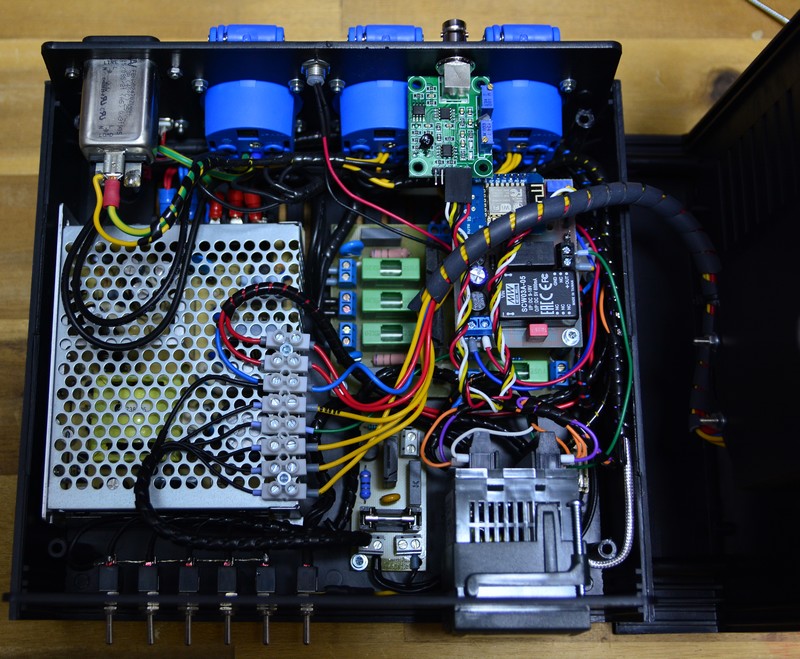







Main PCB: Layout
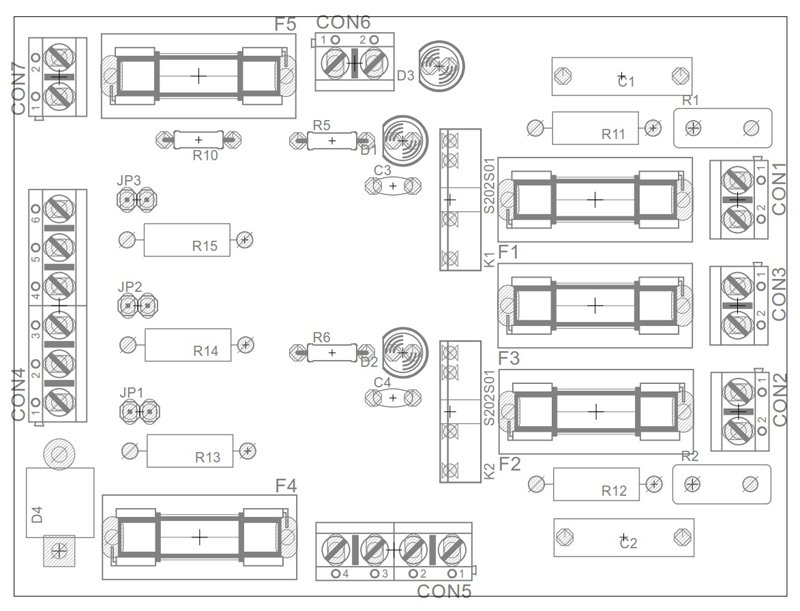
Main PCB : Scheme
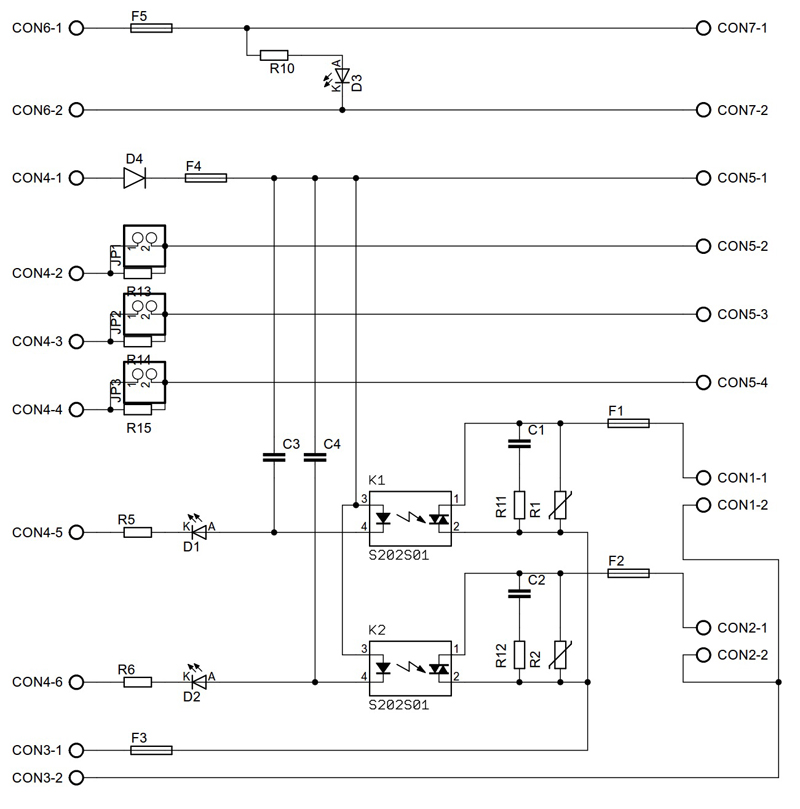
DPS - STRANA SPOJŮ
EAGLE PODKLADY
All component list
Resistors :
- 390R/0.6W / (R5,R6) / 2x
- 470R/0.6W / (R10) / 1x
- 68R/3W / (R11,R12) / 2x
- 560R/3W (OPTIONAL) / (R13,R14,R15) / 3x
- VCR10D391KAR ( VARISTOR, Uac/Udc=250V/320V, RM7.5) / ( R1,R2 ) / 2X
Capacitors :
- CFAC 47n / 275VAC (X2,RM15) / (C1,C2) / 2x
- 1000nF (63V, TANTAL) / (C3,C4) / 2x
Semiconductors :
- S216S02 SHARP (SSR RELAY, 16A/230VAC) / (K1,K2, TEMP.CONT.) / 3x
- P600K (DIODE, 6A) / (D4) / 1x
- GREEN LED, 5mm / (D1,2,3) / 3x
Others :
- S1G20 2,54mm (PINS) / (JP1,2,3,D1,2,3) / 12x
- JUMP-UCH BLK (JUMPER) (JP1,2,3) / 3x
- SPK-2 (JUMPER CONNETOR, 2PIN) / (JP1,2,3,D1,2,3) / 6x
- SPK-PI (PIN TERMINAL) / (JP1,2,3,D1,2,3) / 12x
- KS-PTF78+BS232 (FUSE HOLDERS) / (F1,2,3,4,5, TEMP.CONT.) / 6x
- 5X20 FUSE 1A / (F1,F2, TEMP.CONT.) / 3x
- 5X20 FUSE 3A / (F3) / 1x
- 5X20 FUSE 5A / (F4,F5) / 2x
- ARK500/2 / 7x
- ARK500/3 / 2x
- 1662 (230VAC SOCKET) / (SCK1,2,3) / 3x
- SCREW. TERMINALS (8 TERMINALS) / 1x
- DISTANCE HOLDERS M3X08MM (MAIN BOARD) /3x
- DISTANCE HOLDERS M3X25MM (TC420) /4x
- CANNON 15, MALE + FEMALE + COVER / 1x
- KP14 (Z-17) (PLASTIC BOX) / 1x
- MEAN WELL RS-75-12 (PSU) / 1x
- POWER FILTER FEH51104 / 1x
- POWER SWITCH / 1x
- 3 POSITION, 1 POLE SWITCH / 6x
- PHOTOCUPREXTITE FR4 75x100x1,5 / 1x
- CONTROLLER TC420 DC12V/24V 5 Channel / 1x
- OSAKA QB 48 TEMPERATURE CONTROLLER / 1x
Additional SSR module for temperature controller

DPS - STRANA SPOJŮ
EAGLE PODKLADY
All component list SSR MODULE
Resistors :
- 390R/0.6W / (R5) / 1x
- 68R/3W / (R11) / 1x
- VCR10D391KAR ( VARISTOR, Uac/Udc=250V/320V, RM7.5) / ( R1 ) / 1X
Capacitors :
- CFAC 47n / 275VAC (X2,RM15) / (C1) / 1x
- 1000nF (63V, TANTAL) / (C3) / 1x
Semiconductors :
- S216S02 SHARP (SSR RELAY, 16A/230VAC) / (K1) / 1x
- GREEN LED, 5mm / (D1) / 1x
- 1N4007 (D2)
Others :
- 5X20 FUSE 1A / (F1) / 1x
- F2 50mA, FUSE FSKF
- ARK500/2 / 3x
- PHOTOCUPREXTITE FR4
Lighting modes
- Main white light(75% cold white(6800K) a 25% warm white(4500K)) / 16W (LIGHT)
- GROW light 16W / 36LED ( 4 blue / 2 red ) - twilight ( zapínám k večeru ) (TWILIGHT)
- GROW light 16W / 36LED ( 2 blue / 4 red ) - dawn ( zapínám ráno ) (DAWN)

Graph of automatic control modes

Light spectrum (MAIN LIGHT)
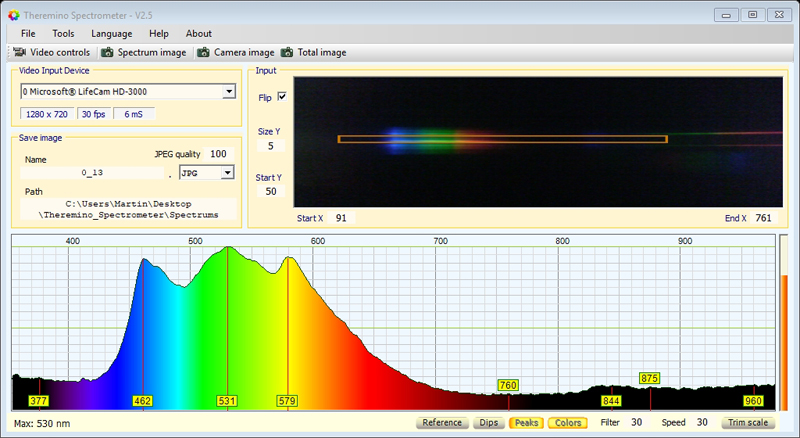
Light spectrum (DAWN / TWILIGHT)
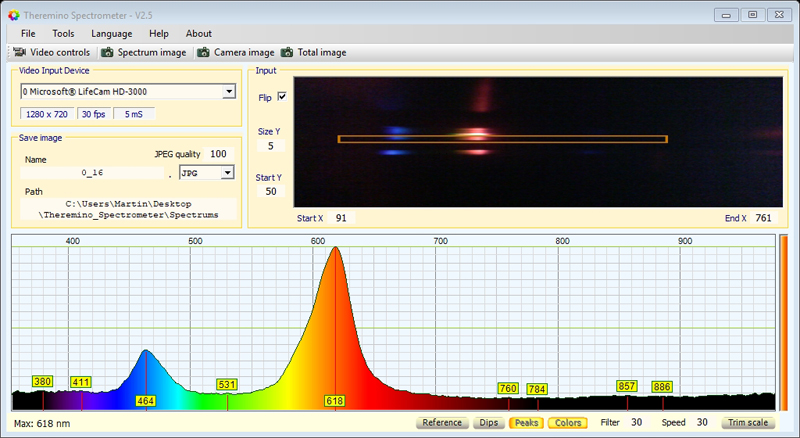
My fish photos









|
